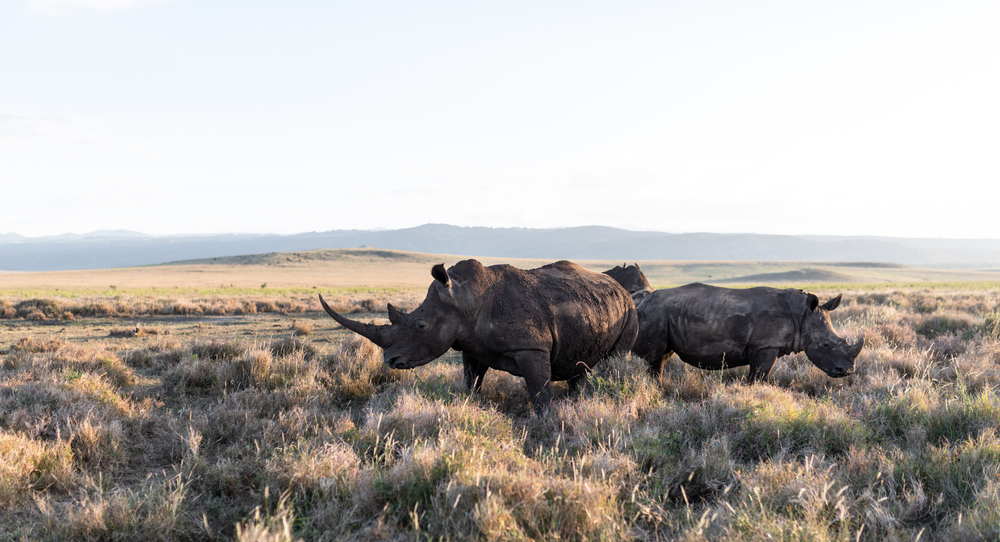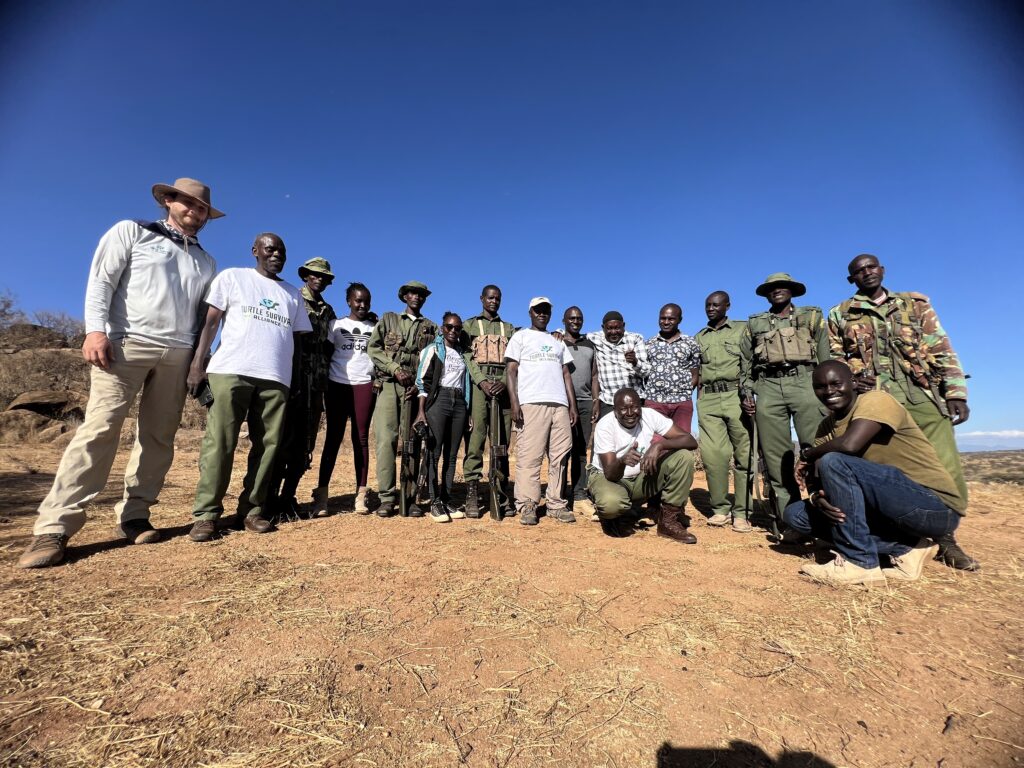The pancake tortoise (Malacocherus tornieri) is arguably the most charismatic of all tortoises. It is miniature, with a flexible and flattened shell. It is an unusually nimble little tortoise that lives in communal units, venturing from rock crevices after dark to graze. Despite the species’ near-perfect profile for a leading role in a Pixar movie, it remains one of the most Critically Endangered tortoises on Earth. Exotics Keeper Magazine caught up with Dr. Dominic Maringa at the Lewa Wildlife Conservancy to learn more about the work of conservationists aiming to change the future of the world’s most adorable tortoise.
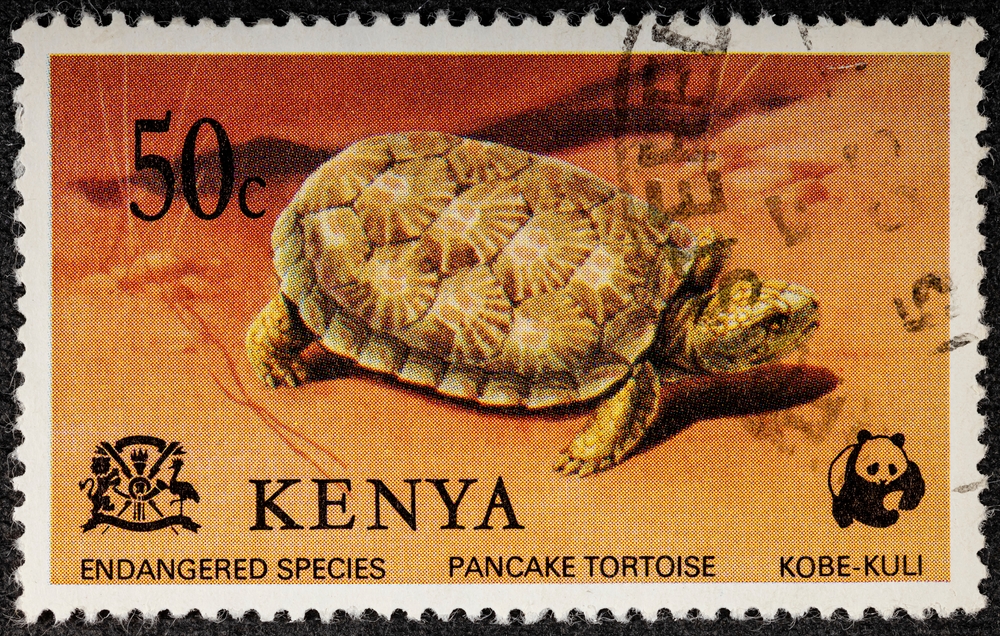
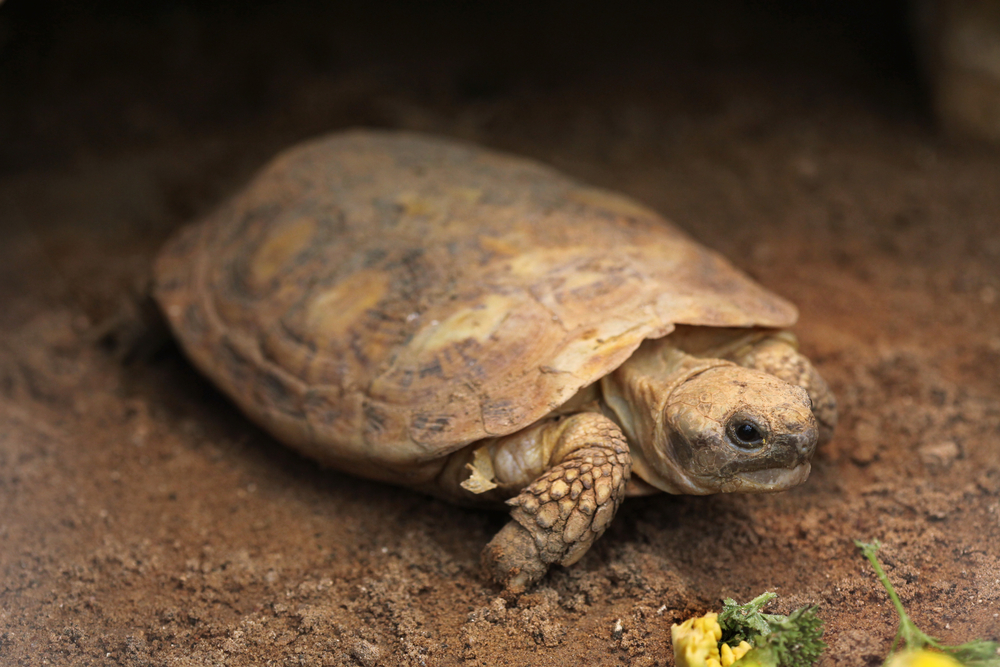
The Pancake Tortoise
The pancake tortoise is a unique, monotypic species and the sole member of the Malocochersus genus. It is a small tortoise, rarely exceeding 17 cm in length and is perfectly adapted to thriving in rocky outcrops. It occurs in highly fragmented habitats across much of Kenya and Tanzania and into northern Zambia. The species’ unusual appearance allows it to wedge its body into crevices, where it spends the hottest parts of the day avoiding predators and extreme heat. As temperatures cool in the evening and early morning, the tortoises will leave the safety of their crevice to graze on vegetation.
Groups of pancake tortoises will often share the same rock crevice. Several individuals can be found sheltering together until the juveniles reach an appropriate breeding age. The species exhibits high site fidelity and rarely strays far from their home range, although rains will trigger breeding adults to move locally between crevices to find new homes.
Interestingly, this species usually only lays one egg at a time. However, they can produce eggs at four-to-eight-week intervals throughout the course of a single breeding season. “In this range, the tortoises breed from around March to May” explains Dr Maringa, who has been surveying the species in northern Kenya for the past 5 years. “This is when people encounter them on the roads as they move from one breeding site to another. Once the eggs are laid, the female will cover and protect them for several months before they hatch at the very end of the rainy season. It can take a pancake tortoise up to 5 years to reach breeding age and with just one egg laid at a time, they are a very fragile species.”
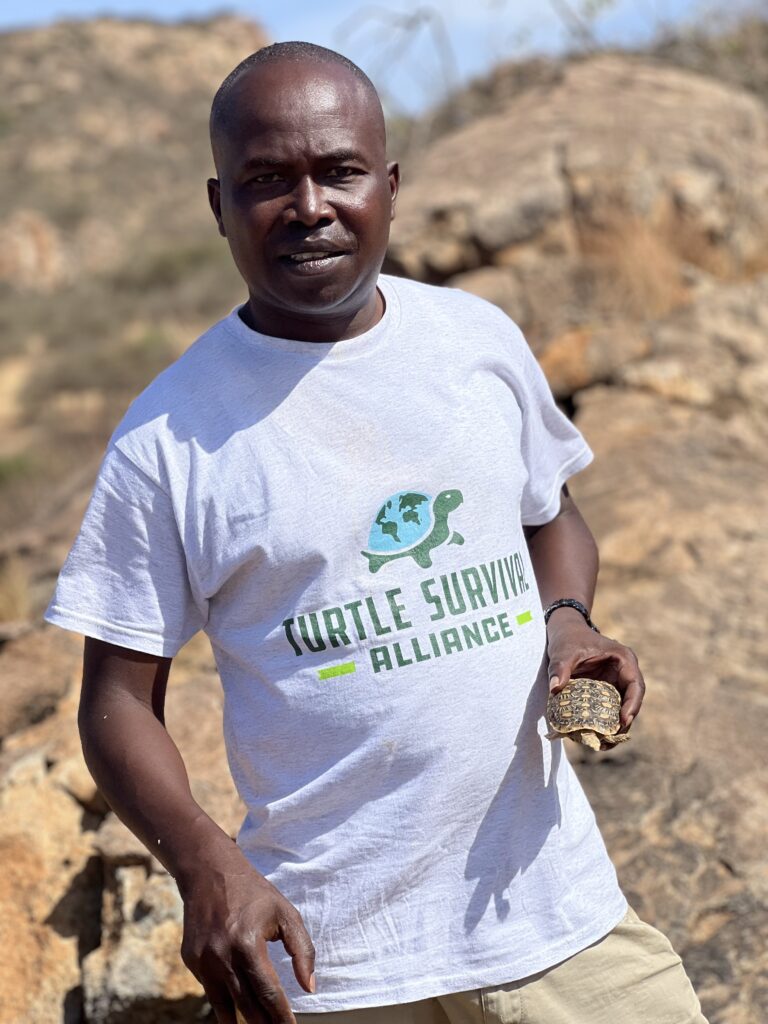
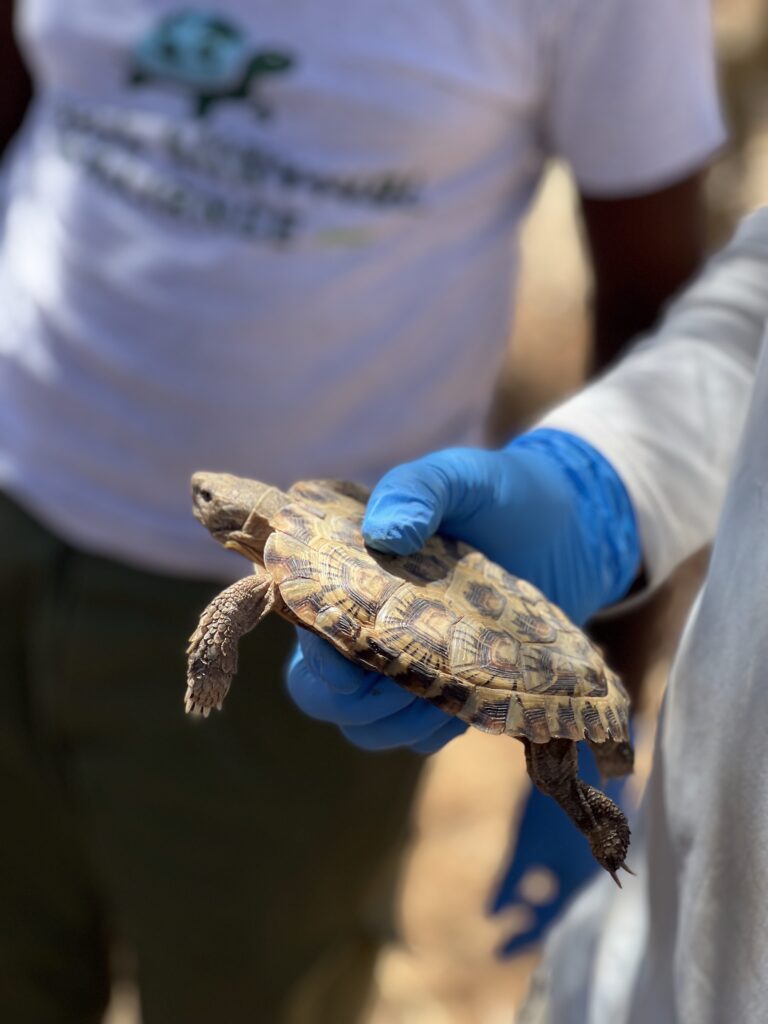
Squashing the Trade of Pancake Tortoises
Pancake tortoises are extremely appealing reptiles and are popular amongst hobbyists. Unfortunately, the exploitation of this species for the private pet trade decimated populations. In 2019, the species was uplisted to CITES Appendix 1 after 25 years of proposals, effectively banning all international trade of pancake tortoises irrespective of their origins. This unfortunately means that even captive-bred animals are now unable to be traded legally anywhere in the world. Whilst this seems to be having a positive impact in Kenya, the story may be different in neighbouring Tanzania, where smuggling for international markets is still rife.
“The main threat that faces pancake tortoises in East Africa is illegal trade” explains Dominic Maringa at the Lewa Conservancy, Kenya. “This incorporates the capture, trade, and export of tortoises for people to keep them as pets. Local communities report that people arrive in their villages with a picture of the tortoises and ask them to show them where they are for a bit of money. With no awareness of the tortoise or its threats, they take them there believing there is no problem.”
Whilst some communities in East Africa are completely unaware of the tortoise’s presence or threats that face them, Dominic and his team at the Lewa Wildlife Conservancy have another challenge to face with other villages that perceive the tortoises as a bad omen. “In some societies in this area, the tortoises are killed illegally because they are associated with witchcraft,” he said. “This negative culture is difficult to change but represents one of the major threats to the species.”
Lewa Wildlife Conservancy has been focusing on protecting the pancake tortoise since 2019 with the support of Turtle Survival Alliance. They have monitored populations across northern Kenya for several years and have recorded 287 unique individuals of this species.
Dominic continued: “Our fieldwork is challenging as it is all on foot. We climb up and down rocky hills while trying to avoid angry elephants, rhinos, buffalos, or hyenas who don’t enjoy seeing us out of our vehicles. Venturing into the bushy, rocky, and sometimes dangerous terrains of these conservancies, we embarked on daily missions to locate and document the pancake tortoise. Crawling on our bellies to inspect rock crevices, differentiating the tortoises’ faecal droppings from those of other inhabitants like lizards, mongooses and squirrels, and cautiously avoiding the occasional spitting cobra, our team employs an array of tools and techniques to safely retrieve and examine these creatures. Each tortoise found is meticulously documented—photographed, weighed, measured, microchipped (PIT tags), and even swabbed for DNA sequencing, ensuring individual tracking and contributing to a growing database of knowledge on this species.”
“Since doing our monitoring we have also found Neumann’s helmeted turtles (Pelomedusa neumanni), the additional efforts to record them has allowed us to monitor new individuals and get a better understanding of their population numbers. We also see leopard tortoises (Stigmochelys pardalis) which are popular with our conservancies. The more prominent a species is, the more that staff at the conservancies or local communities will monitor for that species and the more we can learn about population trends.”
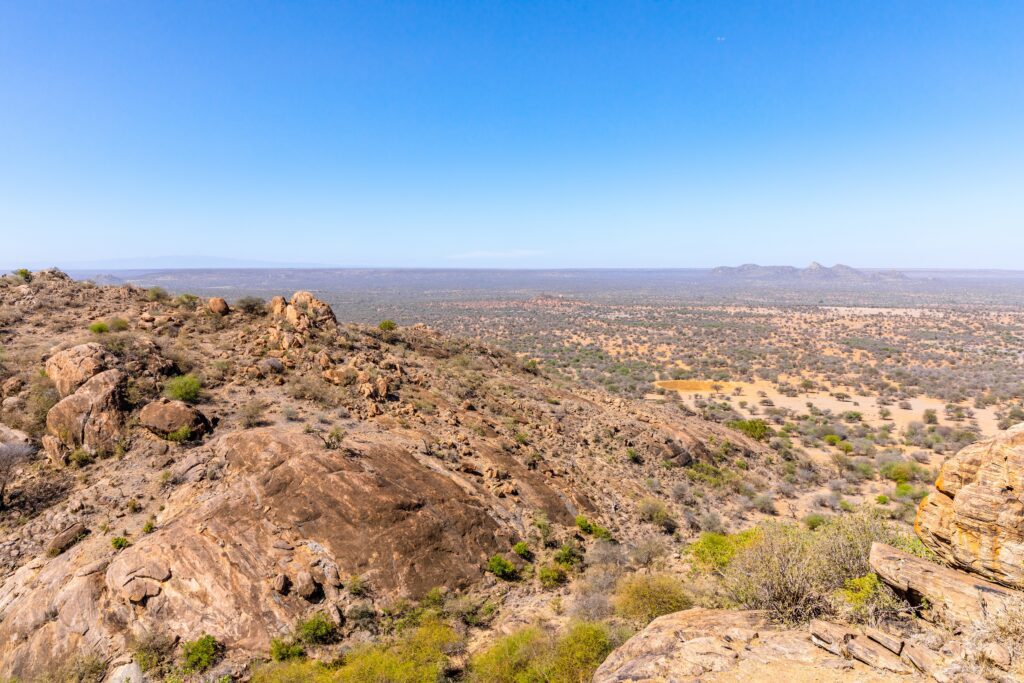
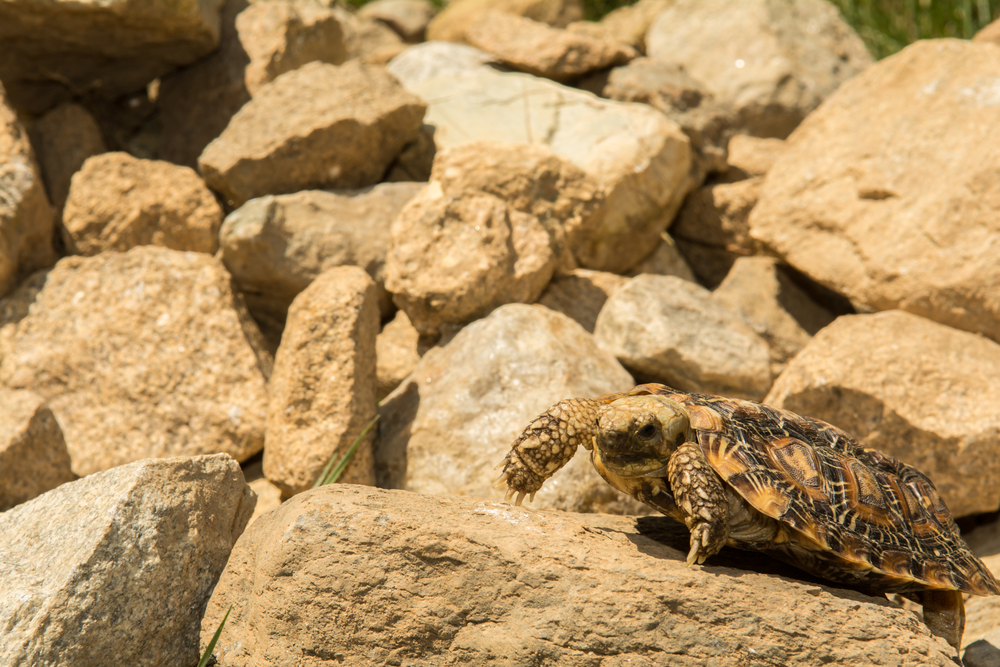
Pancake Tortoise Threats
As with many species of reptiles and amphibians that are finely tuned to their ecological niche, climate change adds additional pressure to the pancake tortoise. Despite the species’ resilience in arid conditions, prolonged droughts in eastern Africa have seriously impacted the tortoises.
Dominic continued: “Northern Kenya, in particular, is a seasonal area. There are two seasons when the rain comes. There are the ‘short rains’ between October and December and the ‘long rains’ throughout March, April and May. Both seasons have seen declines in the volume of water and the length of rain. We associate it with climate change. There was a long drought between 2016 and 2018 and then there was El Niño that impacted rain in 2019 and 2020. We have also experienced prolonged droughts from 2021 to 2023.”
“These droughts are seriously affecting the habitat of the pancake tortoise. These animals come out during the evening to look for soft forage and do not traverse wide areas or move long distances. If there is no forage in their immediate surroundings to sustain them, they die. Often, you can find carcasses of animals that have perished from starvation or dehydration or have been predated upon because they are weak from exhaustion.”
Climate change is an immense challenge for any conservationist to face. Dominic and his team at Lewa Wildlife Conservancy are addressing this problem by working closely with farmers and pasture communities. “Once people accept to coexist with pancake tortoises, they can identify areas to leave for recovery which can provide safe refuge for the tortoises,” he said.
Unfortunately, the impact of climate change is also affecting people in Kenya. 2022 saw a drought so severe it prompted a mass famine affecting over 18 million people in East Africa. In Kenya alone, 4 million people are suffering from extreme hunger as farmable land and crops are decimated by drought and wildfires. In regions where wildfires are destroying pastures, people are forced to farm whatever land they can, including the rocky outcrops where pancake tortoises live.
The Future of the Pancake Tortoise
Kenya is a leading country for conservation and is one of Africa’s “most visited” countries largely due to its fantastic ecotourism initiatives. Ecotourism offers communities and conservancies the ability to generate income whilst also protecting habitat for wildlife. The Lewa Wildlife Conservancy has been doing this for many years, but Dominic believes there’s even more that conservancies can do, with particular focus on the pancake tortoise.
“Out of awareness to conserve other species, herpetofauna is benefiting,” he said. “Northern Kenya is well known for its conservation efforts and communities are creating community land conservation areas with private conservancies and government parks to benefit the populations of pancake tortoises through holistic benefits. A rhino sanctuary in northern Kenya, for example, will help protect lots of herpetofauna.”
“Rhino population numbers are on the increase thanks to heightened awareness and additional protection. We think the same should be applied to pancake tortoises. If we can also improve ecotourism and allow people to see and photograph wild tortoises, it will generate economic benefits for people in local communities to protect the species.”
Collaborative efforts have accelerated the conservation and protection of the pancake tortoise in Kenya. Over 45 stakeholders from local communities to large-scale organisations are now dedicated to the recovery of the pancake tortoise.
Dr. Maringa concluded: “In 2019 we joined hands with Turtle Survival Alliance to get momentum to focus on pancake tortoises. Since then, we have joined the National Museum of Kenya and received financial support from the United States Fish and Wildlife Service . This support has allowed us to move forward and expand with the project. We are now talking about 12 conservancies that are working with the species and are now working on a national species recovery strategy.”
“The data we have collected so far has excited the national agencies to formulate a recovery strategy on a national level. In April, Lewa hosted the first meeting of its kind to protect the pancake tortoise. Next, we will go to southern Kenya for a 2-day forum and later, before the end of the year, we will have a National Forum in Nairobi. We are very proud to be in the driving seat for this.”
For more information on Turtle Survival Alliance visit www.turtlesurvival.org and to keep up with the efforts of Lewa Conservancy visit www.lewa.org.
